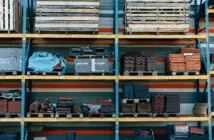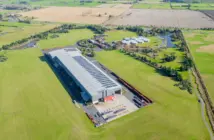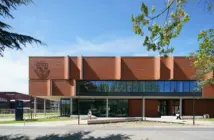Retaining walls are an increasing feature of construction sites as sky high land prices add pressure to maximise the potential returns from each build

Construction companies look to utilise every inch of land when planning new developments, and many projects require high retaining walls to achieve bigger results.
As retaining wall heights increase, so too does the potential impact of a wall collapsing.
The issue can put lives at risk and expose adjoining properties to significant structural damage, as was the case in November last year, when the retaining wall at a multi-storey development site in south-east Queensland collapsed causing serious structural damage to neighbouring buildings and the evacuation of residents.
According to Mainmark Sales and Business Development Manager James O’Grady, “The higher the wall, the more likely things can go wrong and issues can escalate if gas, power or water pipes are affected.”
Drainage is also an important factor, he adds.
“If water can’t escape from behind the wall it will create pressure which can increase the wall’s lateral load from 800kg to 1800kg per metre of height based on the lateral load of non-cohesive soil versus saturated non-cohesive soil.
“This can create a precariously dangerous situation.”
In emergencies, a fast remediation process is required to re-stabilise the area.
This can often require substantial excavation and backfilling, yet in situations where time is critical, traditional backfill materials, such as concrete and aggregate, can be cumbersome and impractical, particularly if the site is hard to access or on steep sloping ground.
This is where solutions such as Mainmark’s Terefil lightweight cementitious fill, and Teretek resin injection, offer significant advantages for engineers and builders to backfill, remediate or support a retaining wall quickly without compromising its structural integrity or strength.
Terefil was recently used very effectively to remediate a retaining wall at the top of a steep slope between a residential property and a public park in Parramatta, NSW, which collapsed shortly after construction.
A new reinforced concrete wall 16m long, 1.75m high and 300mm wide, needed to be constructed with a 1200mm wide and 600mm high reinforced concrete footing.
Its location made access difficult and a traditional concrete solution would have been unfeasible due to the heavy load it would place against the new wall itself, compromising its integrity.
Terefil was used as a solution because it was fully permeable, allowing water to drain, and lightweight even when wet, which reduced pressure on the retaining wall during construction. Its pumpability meant it could fill even the narrowest areas behind the retaining wall. As a result, the retaining wall was adequately supported according to the engineer’s designs and will likely last for many years.
Terefil, which is available in permeable or impermeable form to suit specific site conditions, is ideal as a backfill for retaining walls.
It forms a stable block without disturbing or redirecting natural water flow and its light weight minimises pressure on the wall when compared to heavier granular fills.
Once in place, Terefil can withstand heavy loads, including large machinery and vehicle traffic, to allow construction works to continue.
“The Terefil formulation is highly flowable,” O’Grady explains.
“Its pumpability is able to reach more than 620 metres and can be placed at 70 cubic metres per hour.
“Terefil is also environmentally inert, uses much less water than traditional cementitious fill solutions and, is extremely cost effective.
“Sampling and compression tests carried out to Australian Standard AS1012.9 confirm Terefil’s permeability is in the range of 0.53cm to 0.087cm per second and has a compressive strength from 0.5 to 6 MPa once it has cured.”
Teretek engineered resin also provides an immediate solution for stabilising a partially collapsed retaining wall or where there is a need to increase the strength of the ground and reinforce the toe of a retaining wall.
Teretek is a two-in-one innovation that delivers both ground improvement and re-levelling.
When injected into retaining walls, the resin components mix together and expand, strengthening and re-supporting the wall’s footings without the need for any undue demolition or excavation.
Teretek can also be used as backfill or to consolidate any fill material to help protect and strengthen a newly rebuilt retaining wall.
In the event of a retaining wall collapse, Mainmark’s team of engineers can assess a site’s individual requirements and tailor a fast and cost effective remediation solution.



